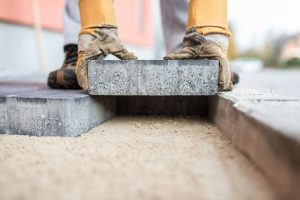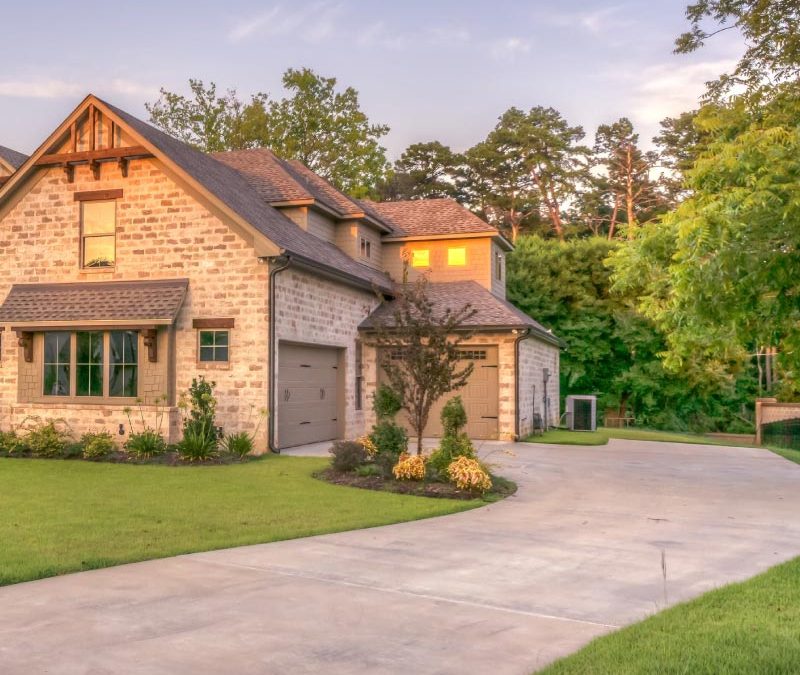Anything large-scale can now be reduced and revolutionized into your home specifications, thanks to the advent of modern industrial solutions. From home office pods, built-in gym studio, and even concrete footpaths — everything is within reach and a dial away from your concrete contractors Sydney.
And if you’re thinking of revamping your landscape and extra yard space, or just simply feeling the need for a pathway, here’s a few bits of knowledge you might want to equip yourself with;
What is a Footpath?

When it comes to residential properties, concrete footpaths are pathways that leads and directs to an entrance, whether it is the front door of your home, the pool area, the barbeque area, the garage, the courtyard, the gardens, or the patio entryways. Pavers for walkways are the ideal choice for a wide range of footpath applications. It is indeed considerably a good addition to your landscaped yard!
As a pathway outside commercial malls, recreational parks, governmental buildings, and theaters (among other places), they are prominently installed to provide convenience to pedestrian traffic. They serve as an invitation and a point of reference for pedestrians and shoppers as they approach an entry, producing a welcoming and warm fuzzy feeling in the process.
Design Selection Ideas for Concrete Footpaths
Stampede Concrete
A regular slab of concrete can be transformed into natural stone or pavers by stamping it. A stone veneer is highlighted throughout the façade by the curved concrete pathway that has been embossed and tinted. The tone of the stain can complement to the color scheme of the home’s hardscape well. The stamping adds another level of detail to the entrance, directing your gaze from the walkway to the veneer stone column and then up to the door. The seamless texture stamp links the design together while not obliterating the little nuances that make a design great.
Colored Concrete
Concrete staining and dying products may change the color of concrete to almost any shade imaginable. Using different tones and a contrasting dark to light colors to surround the walkway, you can alter the specification to your liking to complement the architecture of the home. It’s no longer drab for your homes; it can now have a warm, inviting entrance that boosts the home’s curb appeal.
Curved Path
A curved concrete path creates a natural, informal entrance to a residence. Visitors can be lead through your front yard landscaping and get a good view at the front of your house thanks to the huge sweeping curve. With an organic design, concrete footpaths can add a striking contrast to a home’s classic, geometric style.
Straight Path
A straight shape provides a dignified entrance that leads directly to your front door. A drought-tolerant modern design is created by filling in between the concrete and across the landscape with smooth river rock. The straight walkway made out of poured concrete squares and the rectangular planters with papyrus follow the straight lines and geometric shapes from the home’s architecture into the landscaping.
Installation Process

- The location is surveyed and laid out.
- Remove any grass from the area and excavate or fill the area to the proper depth.
- Preparation of a compacted sand basis;
- Timber boxing is used to define the boundaries of the footpath’s margins.
- The concrete is poured onto the foundation.
Benefits of Footpaths
1. Lasting Optimal Function and Appeal
A footpath is intended to last for a couple of decades, if not indefinitely, when it is established. Choosing concrete footpaths ensure that it will remain in place long after you have vanished. Its inherent resilience makes concrete a good choice for pathways and a variety of other applications where long-term durability is required. Furthermore, it is also quite adaptable. Even in hostile conditions, if it is properly built, it can last for up to 30 years in good shape.
2. Curb and Aesthetic Appeal
When someone walks into your house or business premises, the first thing they will recognize is how interesting the environment is. An inviting walkway provides visitors a sense of greeting and makes it simple for them to travel from their car or truck to your front door (or other location, such as your backyard), which increases the curb appeal of your property. A concrete pathway is often finished with a smooth surface that can be used to improve the appearance of one’s property. Aside from that, there are a variety of design options that can be used to make your path even more appealing. It’s the perfect complement to a perfectly manicured lawn, don’t you think?
3. Convenient and Accessible
A footpath is the quickest and most convenient method to go to the front of a house or structure. In order to get to their destination, visitors will not have to utilize your driveway or walk over the grass – they will be able to take advantage of the convenience a footpath provides. If you or anyone in your household are older or have mobility concerns, concrete is the ideal material to use for a walkway or driveway. Because concrete is a non-slip surface, this is the case. Furthermore, if it is properly fitted, there will be no gaps or fractures. Alternatively, concrete footpaths can be constructed to connect various areas of the house together. For example, you could build a path between your front yard and your backyard to make it easier to get things from the front to the back of your home. Another really beneficial application of concrete footpaths is that they can help to protect your landscaping effort by creating a well-established path around it.
Why Use Concrete?
Poured concrete is one of the most commonly used materials in the construction of sidewalks. These walks offer the advantages of being level, long-lasting, and visually appealing. While concrete footpaths are not as easy to repair as other materials, it will give years of low-maintenance enjoyment for the homeowner. Concrete slab walks can be found serving as sidewalks to municipal roadways, as well as other principal or secondary paths in a variety of settings. They are both the most durable and the most complex to fix at the same time. A third alternative is to pour concrete into molds and then cast the shapes on-site, which produces an effect that is similar to that of precast concrete. Concrete that has been poured is highly durable and resistant to erosion, which makes it a popular choice for many projects. A correctly built concrete slab can last for several decades before it needs to be replaced or repaired. A high degree of versatility in the materials used in the concrete mixture as well as the possibility to add inlays, texturing, and numerous other details as the slab cures make this a particularly versatile construction method. It also conforms more easily to the twists in the walkway because it does not require the materials to be cut or shaped first.
Looking for a concreter to add a footpath for your home and give it a vibrant aesthetic appeal? Concreter.Sydney offers professional services that look fantastic and last a long time. As concrete sidewalk contractors, we also offer a variety of additions to your paths to make your vicinity not only functional, but also more beautiful. You can play with a multitude of designs to suit your taste.
For all your outdoor concreting needs, whether that be a garden or just a simple pathway to connect your spaces, we have everything covered. Send us a message today!


Recent Comments